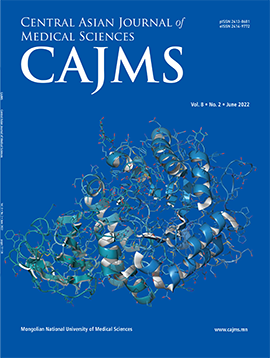Performance of Ovarian Response Prediction Index As Predictor of Ovarian Response
DOI:
https://doi.org/10.24079/cajms.2022.06.007Keywords:
Infertility Women, Ovarian Diseases, Follicle Stimulating Hormone, Anti-mullerian Hormone, FertilizationAbstract
Objective: We aimed to evaluate potential predictors of response to controlled ovarian stimulation (COS), including follicle stimulating hormone (FSH), Estradiol, antral follicle count (AFC), and ovarian response prediction index (ORPI). Methods: In this prospective, single center study, we recruited 55 infertile women underwent the first cycle of in vitro fertilization/ intracytoplasmic injection/intrauterine insemination (IVF/ICSI/IUI). We measured serum FSH and anti-mullerian hormone (AMH) level by ELISA and evaluated AFC. In accordance with formula, AMH x AFC / patient's age, ORPI was calculated. Results: The study participants are aged between 25 to 48 in infertility women. The mean age of the participants are 34.5 ± 5.5. The hormonal predictors, as well as ovarian response, are presented in Table 2. Predict ovarian hypo response by E2 and ORPI. Multivariable models improved the predictive accuracy for hypo-response (AUC > 0.6). With regard to the hyper-response, ORPI, E2 and AFC showed good predictors. In the multivariable model, the ORPI, E2 and AFC presented the best predictive accuracy, with an AUC 0.81, a sensitivity of 87 %, and a specificity of 67 %. Conclusion: ORPIndex is predicting the hyper-response more accurately than the ovarian hypo- response in infertility women. Participant’s ovarian reserve biomarkers (AFC and E level) was significantly increased predictive accuracy.
Downloads
352
Downloads
Published
How to Cite
Issue
Section
License
Copyright (c) 2022 Mongolian National University of Medical Sciences

This work is licensed under a Creative Commons Attribution-NonCommercial 4.0 International License.




